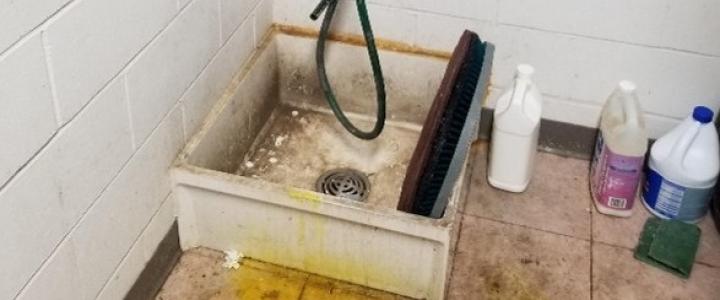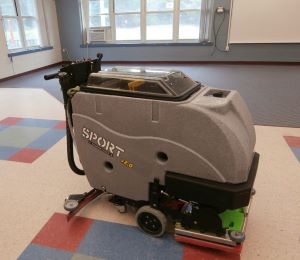
NHDES Investigates Lesser-Known Sources of PFAS to Groundwater
Per- and polyfluoroalkyl substances (PFAS) contamination continues to impact drinking water supplies throughout New Hampshire, even in rural areas far from known release sites. Since 2021, NHDES’ Drinking Water and Groundwater Bureau (DWGB) has been conducting statewide investigations of lesser-known sources of PFAS. The findings of these investigations, and the regulatory changes that result, will aid in protecting drinking water sources in the state, particularly in communities with onsite drinking water and wastewater disposal systems.
 One such investigation involves wastewater derived from commercial cleaning operations, including commercial carpet cleaning, floor cleaning, and floor stripping and refinishing activities. PFAS are common ingredients in cleaning product formulations because of their effectiveness in enhancing the oil, water, stain and soil repellent properties of cleaners and surface treatments. Use of PFAS-containing cleaners may contaminate wastewater derived from cleaning activities, and when disposed of through onsite septic systems, PFAS-containing wastewater has the potential to contaminate nearby drinking water supplies. Sampling efforts by DWGB have found that wastewater generated from commercial carpet-cleaning activities can contain PFAS at levels up to 130,000 ng/L (parts per trillion, ppt), which is 6,500 times higher than the state’s drinking water standard. PFAS levels are even higher in wastewater derived from floor stripping and refinishing, reaching nearly 230,000 ng/L.
One such investigation involves wastewater derived from commercial cleaning operations, including commercial carpet cleaning, floor cleaning, and floor stripping and refinishing activities. PFAS are common ingredients in cleaning product formulations because of their effectiveness in enhancing the oil, water, stain and soil repellent properties of cleaners and surface treatments. Use of PFAS-containing cleaners may contaminate wastewater derived from cleaning activities, and when disposed of through onsite septic systems, PFAS-containing wastewater has the potential to contaminate nearby drinking water supplies. Sampling efforts by DWGB have found that wastewater generated from commercial carpet-cleaning activities can contain PFAS at levels up to 130,000 ng/L (parts per trillion, ppt), which is 6,500 times higher than the state’s drinking water standard. PFAS levels are even higher in wastewater derived from floor stripping and refinishing, reaching nearly 230,000 ng/L.
The solution is seemingly straightforward: switch to cleaning products that do not contain PFAS. However, PFAS are rarely listed on ingredient labels or safety data sheets for cleaning products (or any product, for that matter), making it nearly impossible for business owners and other consumers to ensure the product is free of PFAS. While efforts are underway to collate lists of products that do not contain PFAS (e.g. US Environmental Protection Agency’s Safer Choice Certified Products, Green Policy Institute’s PFAS-Free Products, and Environmental Working Group’s Products Without Intentionally Added PFAS) these lists are currently limited in scope and often come with caveats. Furthermore, NHDES’ sampling efforts suggest that PFAS may also be present in, and extracted off of, the carpets and floors that are being cleaned; in other words, simply transitioning to PFAS-free cleaning products may not eliminate PFAS from the waste stream.
In light of these findings, NHDES is engaging with businesses that perform commercial cleaning in the state, particularly those with onsite septic systems, to promote awareness and develop guidance for disposal of PFAS-containing wastewater to minimize impacts to drinking water supplies. Options for disposal of PFAS-containing wastewater may include granular activated carbon treatment prior to discharge or containerizing wastewater for pickup by a waste removal company. NHDES is also partnering with other state and federal agencies to exchange information on this topic and identify other lesser-known PFAS sources. Through open communication and collaboration, the state continues to take steps to ensure safe and reliable drinking water supplies for New Hampshire now and into the future. If you would like more information or would like to participate in NHDES’ commercial cleaning PFAS sampling efforts, contact Jennifer Harfmann at jennifer.l.harfmann@des.nh.gov or (603) 271-8647.




